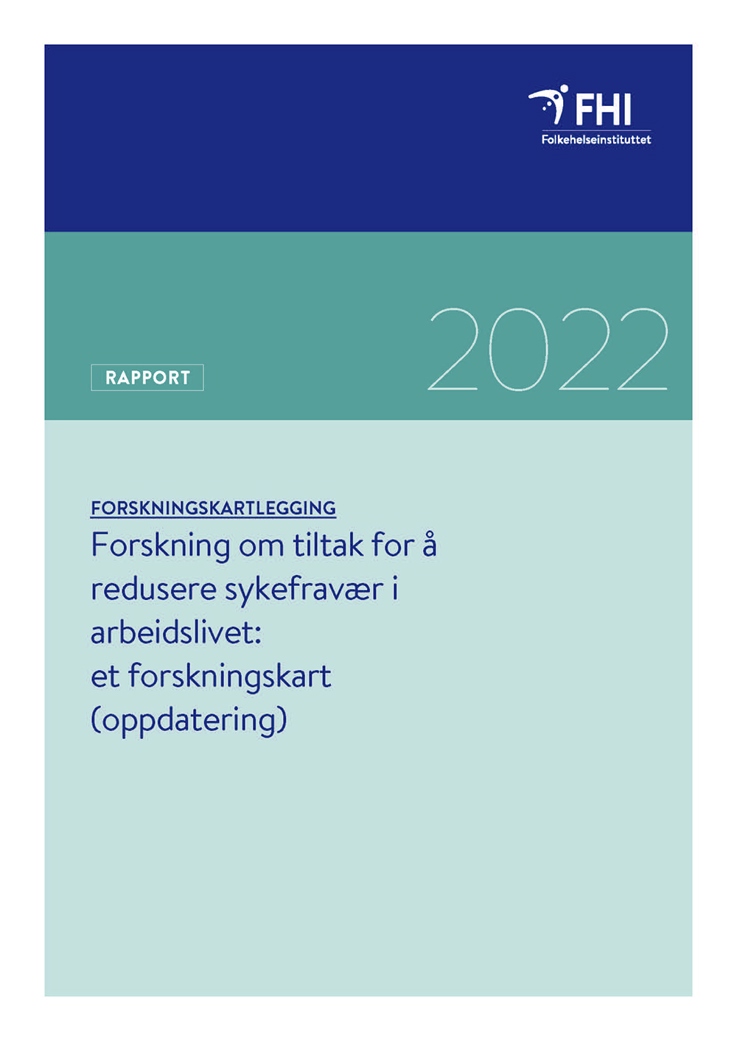An updated evidence and gap map on work-related interventions to reduce sick leave
Mapping review
|Published
The Institute of Public Health was commissioned to prepare a research map of research on work-oriented measures for those on sick leave.
Key message
In 2021, the Norwegian Institute of Public Health published an evidence and gap map (EGM) on interventions to reduce sick leave among employees. The Norwegian Labour and Welfare Administration requested an updated EGM, now with broader inclusion criteria, to gain a greater overview of available research in the field.
We identified 12,131 references through our systematic literature searches, screened them against the inclusion criteria, and coded the included publications. 531 publications concerned an intervention to reduce sick leave among employees on sick leave. Of these publications, we included 346 studies in this map and placed 185 in appendices.
- The most common primary diagnosis among the people on sick leave was musculoskeletal (34% of 346 studies)
- 22% of the studies were from Norway
- Half of the studies involved interventions categorized as multidisciplinary (46% of 346 studies)
- With regard to non-multidisciplinary interventions, the most common intervention was psychological follow-up (11% of 346 studies)
- The most common category with regard to providers was multiple providers (30% of 346 studies), followed by intervention creator (23 % av 346 studier).
There is a considerable number of studies on measures to reduce sick leave for employed people, including many studies from Norway. This evidence and gap map, including the appendices, can be used to develop commissions for future systematic reviews as well as to plan new primary studies.

